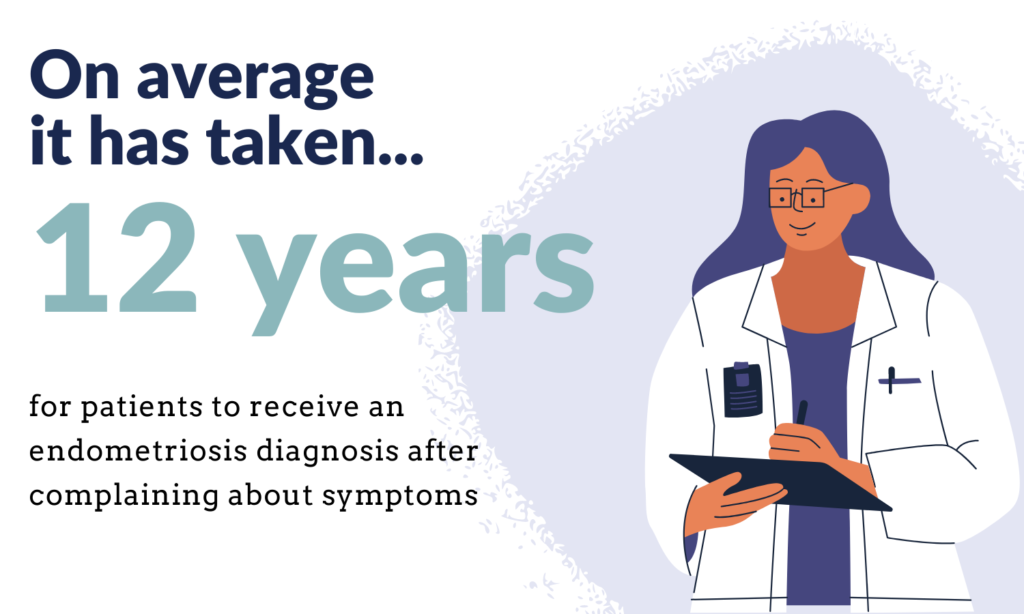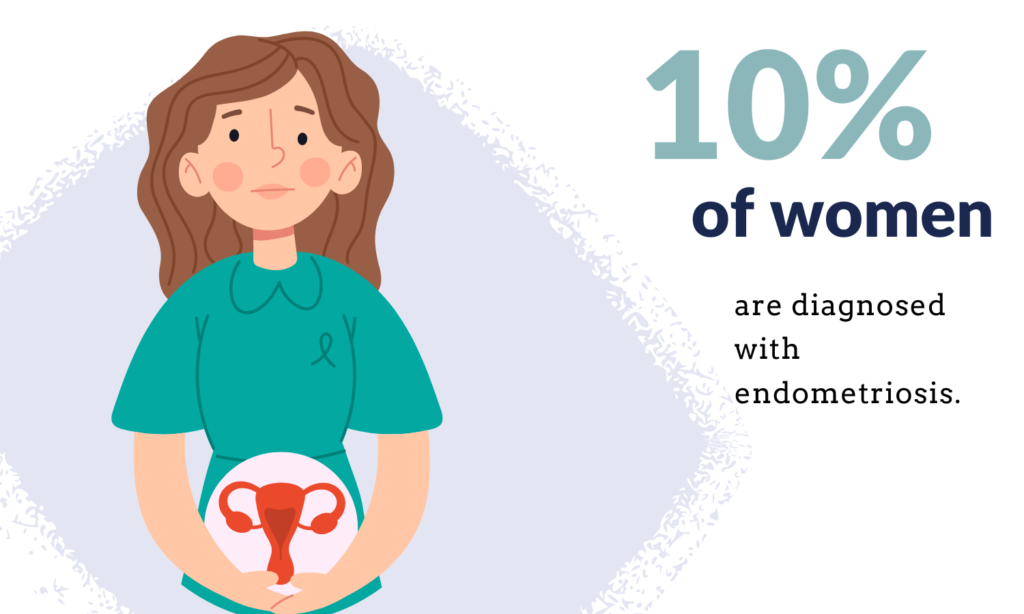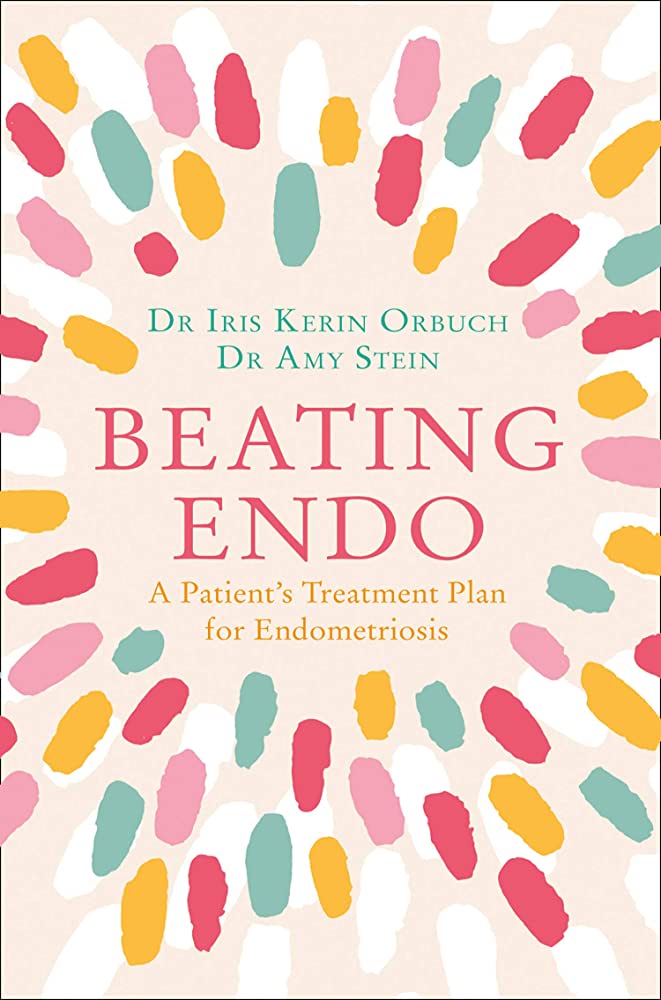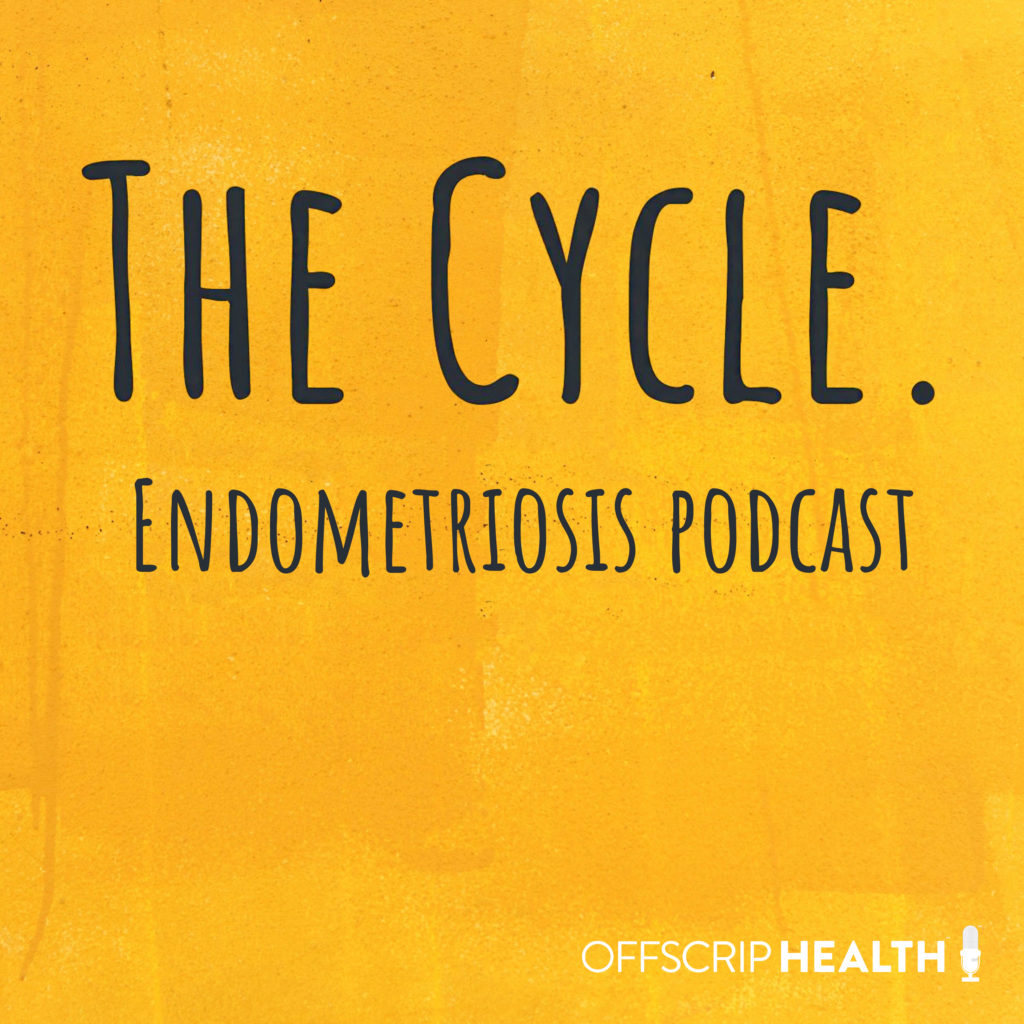When cells, similar to those in the lining of the uterus, deposit outside the uterus. These cells form implants, commonly known as adhesions, which can restrict movements of organs, fascia and surrounding muscles of the abdomen and pelvis.
All women experience Endometriosis in a different ways. Symptoms can include, but are not limited to:
- Painful periods
- Pelvic pain
- Bladder frequency or urgency
- Bladder leakage
- Constipation
- Pain with bowel movements
- Pain with intercourse
- Infertility
- Abdominal pain
Women that have Endometriosis often have other autoimmune and autonomic disorders. Other diagnoses associated with Endometriosis can include:
- Allergies
- Asthma
- Eczema
- Hypermobility
- Painful Bladder Syndrome (IC)
- Irritable Bowel Syndrome (IBS)
- Crohn’s Disease or Celiac Disease
- Chronic Constipation
- Anxiety and Depression
- Dyspareunia (painful intercourse)
- Dysmenorrhea (painful periods)
- Infertility
- Autoimmunity
- Raynaud’s Disease
- Thyroid Disease
Diagnosis

Receiving an endometriosis diagnosis can be a long journey. On average, it takes a patient 12 years to receive a proper diagnosis to explain their symptoms. Some of this is because each woman with endometriosis experiences the condition differently, offering a wide variety of symptom presentations, and also it is difficult to fully diagnose without surgery. There are common screenings, like an ultrasound, HSG test or pelvic exam, performed by a doctor to look for signs and symptoms of endometriosis. However, the only true confirmation of endometriosis comes from a surgery called laparoscopy. This is where a doctor will perform an exploratory surgery to examine the tissue in and around the uterus, looking for endometriosis lesions, and often times removing them via excision or ablation.

How Can Pelvic Physical Therapy Help?
Women often feel limited in their options after diagnosis. The good news is that guided movement and manual therapy treatments, performed by a skilled pelvic health rehab specialist, are extremely helpful in restoring function and improving pain! Pelvic floor physical therapy is not just about Kegels and pelvic floor strengthening – this type of care offers a wide variety of pain management techniques and large tool box to teach you ways to help get comfort and movement back. To help you get your life back! Head to this blog post to learn more about how physical therapy can help manage endometriosis.
Common Misconceptions
“Having a glass of wine and relaxing will cure the pelvic pain with intimacy”
Overly tight muscles of the pelvic floor and abdomen are common reasons for pain with intimacy or intercourse. These tissues often need gentle stretching and manual therapy to normalize tissue tension and length and restore blood flow. The nervous system needs to be calmed and guided to return to intimacy without pain. Drinking wine to “relax” is just masking symptoms and not getting to the root of why the pain is there in the first place.
“Hysterectomy will cure the problems”
Even after removing the uterus, there can still be adhesions around the abdominal cavity. This will continue to create difficulties with constipation, bladder control, and pelvic/abdominal pain. Finding an endometriosis specialist for surgeon will help, they will know to look around the abdomen versus just taking out the uterus. It’s important to know that muscle weakness and pelvic floor dysfunction can still remain after surgery and it’s important to seek out a pelvic health physical therapist for guidance in healing.
“You just need to suffer until menopause”
There is hope to live a happy, healthy life with Endometriosis, during your menstruating years! There are many lifestyle changes and practices including mindfulness, physical activity and diet that can help manage and improve symptoms. Finding a team of endometriosis specialists to help you manage your condition is key.
We recommend having the following individuals on your health team:
- Pelvic Health Rehab Specialist – Physical Therapist, Occupational Therapist
- Endometriosis Surgeon – specialized in excision surgery
- OBGYN or Urogynecologist – specialized in working with endometriosis
- Dietician or Nutrition Specialist – specialized in autoimmunity or endometriosis management
- Massage Therapist – someone who can work alongside your PT/OT in managing symptoms
- Mental Health Specialist – specialized in living with chronic health conditions
- Team of supportive family & friends!
Resources

Beating Endo: A Patient’s Treatment Plan for Endometriosis
By: Dr Iris Kerin Orbuch and Dr Amy Stein

Nancy’s Nook is an online learning library that originated as a Facebook group. Patient stories, up-to-date Endo news, and even a doctor finder feature.

The Cycle is a podcast with the goal to share stories and empower patients post-diagnosis.
Looking for more information on Endometriosis or suffering from pain associated with it? Contact us today and we’d love to help!
